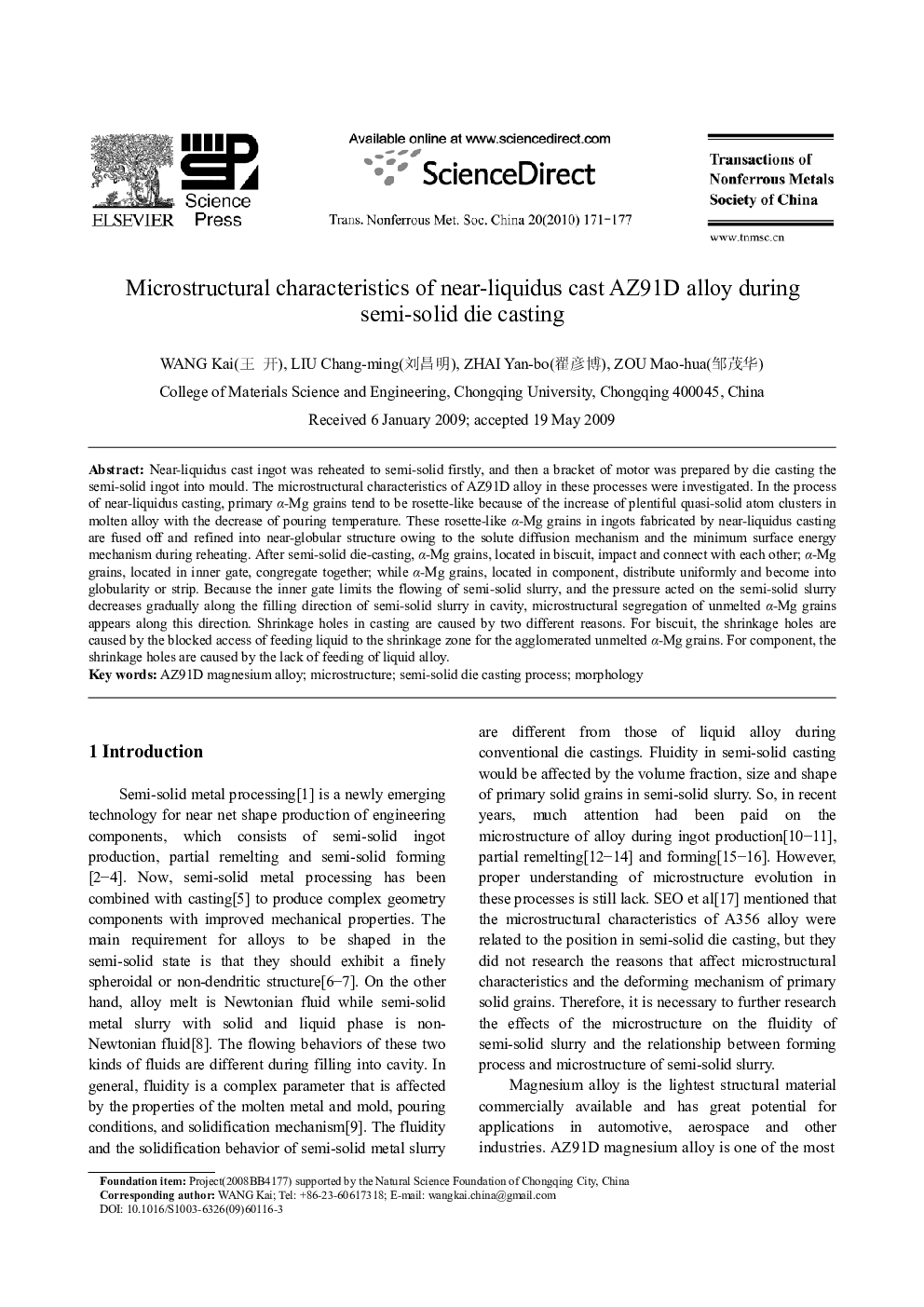| Article ID | Journal | Published Year | Pages | File Type |
|---|---|---|---|---|
| 1637797 | Transactions of Nonferrous Metals Society of China | 2010 | 7 Pages |
Abstract
Near-liquidus cast ingot was reheated to semi-solid firstly, and then a bracket of motor was prepared by die casting the semi-solid ingot into mould. The microstructural characteristics of AZ91D alloy in these processes were investigated. In the process of near-liquidus casting, primary α-Mg grains tend to be rosette-like because of the increase of plentiful quasi-solid atom clusters in molten alloy with the decrease of pouring temperature. These rosette-like α-Mg grains in ingots fabricated by near-liquidus casting are fused off and refined into near-globular structure owing to the solute diffusion mechanism and the minimum surface energy mechanism during reheating. After semi-solid die-casting, α-Mg grains, located in biscuit, impact and connect with each other; α-Mg grains, located in inner gate, congregate together; while α-Mg grains, located in component, distribute uniformly and become into globularity or strip. Because the inner gate limits the flowing of semi-solid slurry, and the pressure acted on the semi-solid slurry decreases gradually along the filling direction of semi-solid slurry in cavity, microstructural segregation of unmelted α-Mg grains appears along this direction. Shrinkage holes in casting are caused by two different reasons. For biscuit, the shrinkage holes are caused by the blocked access of feeding liquid to the shrinkage zone for the agglomerated unmelted α-Mg grains. For component, the shrinkage holes are caused by the lack of feeding of liquid alloy.
Related Topics
Physical Sciences and Engineering
Materials Science
Metals and Alloys
Authors
Kai WANG, Chang-ming LIU, Yan-bo ZHAI, Mao-hua ZOU,
